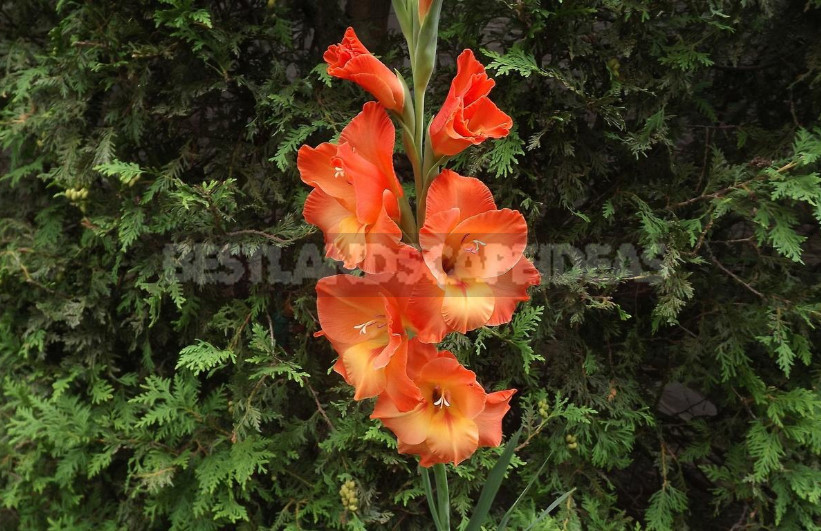Of course, well, when a plant can be plant and provide fate. The rain will pour, the sun will warm, the earth will feed, and will cope with weeds. But not all so simple though cultures have an intricate and require attention also has fans. A lot of them.
The current state of Affairs in the flower market and the ease of travel outside the country make it possible to acquire new problems, i.e. new cultures. Even the agricultural machinery of traditional gladiolus requires trouble: in winter it is dug up and stored dry in a cool place. At the practical gardener at once a heap of questions: what for the room, what temperature, humidity, to store naked or something to pour? In each case, it is solved in its own way.
Who is seriously engaged in dahlias, knows how many subtleties in this case.The main problem is drying out, which often occurs when stored in the refrigerator. In addition, the refrigerator limits the possibilities: it is too small and clean, there is competition from the products stored it dries, then overgrown with mold. Ideal ordinary village cellar, where the winter temperature does not fall below +4…+5 degrees, and the humidity is just such that the potatoes remained fresh and elastic. However, the weighty corms of purebred gladiolus can be preserved even at room temperature in the dry air of a city apartment.
There are two storage options: keep the underground organs in the open, scattered in a thin layer of the box, or fill them with dry sand, peat, sawdust, in General, hygroscopic substrate. In the fridge kind of helps the wrapping in a thick postal paper – Kraft. The choice of method depends on the storage conditions, on the characteristics of a particular plant and is determined experimentally.
Corms rarities: how to store?
With old cultures, everything is clear: there are many recommendations, and you can choose the right one for your particular case. What if there’s something new?
You can open to store some relatives of a conventional hybrid gladiolus. These are Gladiolus cardinalis, G. saundersii, G. papilio, G. primulinus with varieties, varieties of the group Nanus Hybrids.
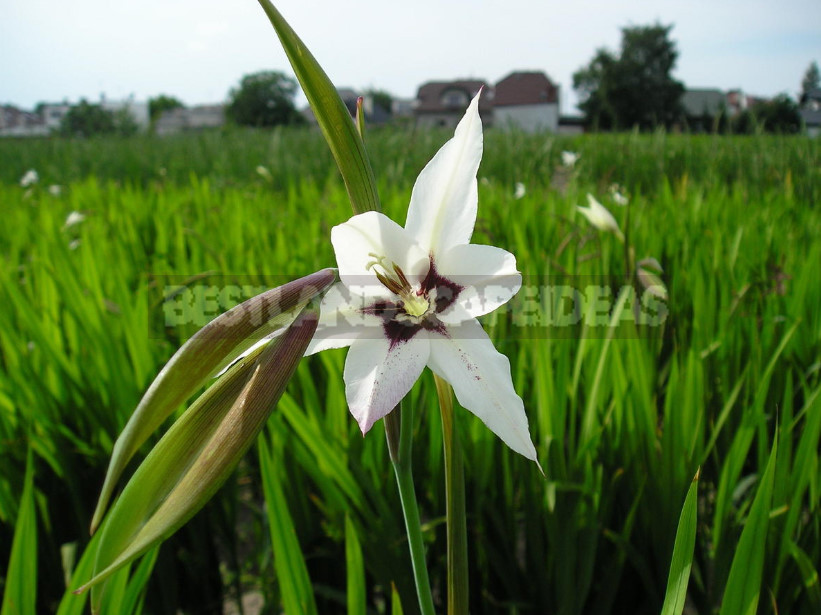
Not different from them storage conditions and the so-called Acidanthera bicolor = G. callianthus — white with red spots in the center.
Crocosmia
Crocosmia, which are now widespread, from the same family as gladiolus. This genus may include members of the genus Montbretia, Tritonia and some other genera, so its volume is not determined.
The most popular representative of Crocosmia and the only one we have until recently is C. x crocosmiiflora.
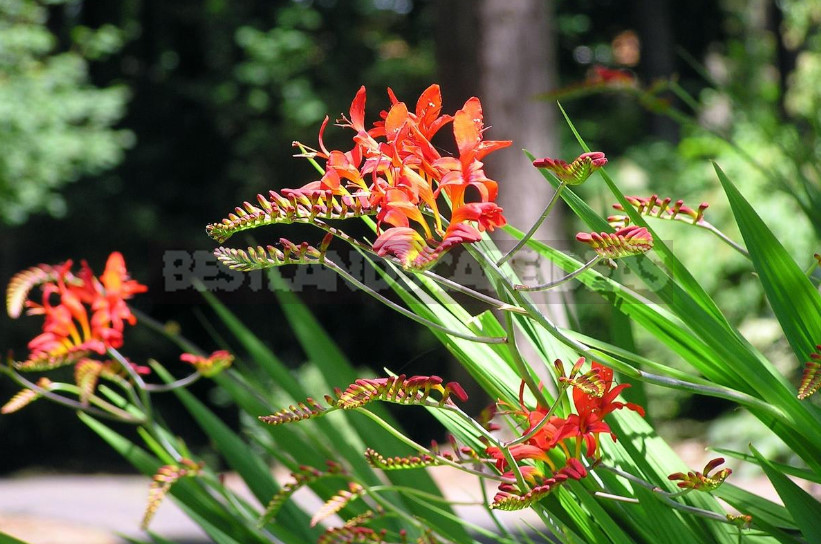
This plant with corms — like gladiolus, only small. Stem up to 1 m tall with narrow protruding leaves at the bottom. The branched inflorescence is a panicle of spikes. Bright orange-red flowers tubular, up to 5 cm long with a few splayed leaves. Actively and naturally gives the baby, with seed reproduction, different options are obtained, as a result — the splitting of signs.
Modern hybrid varieties of Crocosmia are obtained with the involvement of other species and have different shades of yellow, orange and red. Can be called ‘Bressigham Blaze’, ‘Lucifer’, ‘Citronella’, ‘Ember Glow’, ‘Firebird’, ‘Spitfire’.
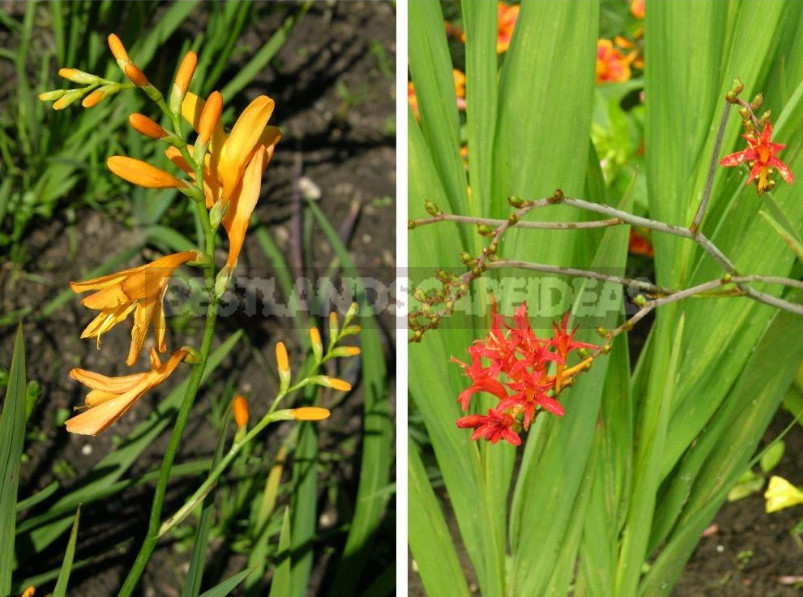
For growing Crocosmia preferred rich sandy loam and good watering. And some species are generally prone to wet habitats, at least in the summer. Varieties were selected for winter hardiness and can officially withstand frosts up to -10 degrees.
The solution of the main question: to dig up or not — depends on the degree of frivolity. Corms sit at a depth of 7-10 cm, and if the soil does not freeze to such a depth, the flower will survive, and will freeze – alas… it is Advised to pile on top of a thick layer of earth, leaves, etc., which will have to be removed in the spring. I think it’s easier to dig.
Although in storage there is more of a problem than in the case of gladiolus. Corms it is small and very dry, so it is advised to dig up and dry with a lump of earth. Perhaps, in the cellar it will be better than in the fridge, especially if you pour sawdust and similar materials.
Tritonia
You can try to contain elegant Tritonia rubrolucens = Tritonia disticha subsp. rubrolucens with spreading stems and small pink flowers.
What else can you get from a nice family of iris? For example, South African species Chasmanthe = Antholyza, especially since they have large corms, like gladiolus. Figure and spicate inflorescence resembles montbretia, but the flowers are gracefully curved, and long, narrow, forward protruding upper leaves. Often mentioned in catalogs C. aethiopica and C. floribunda = C. praealta.
Tigridia pavonia
Tigridia pavonia — powerful as a large iris, with flowers up to 15 cm in diameter enchanting coloring. They are pink, red, white, yellow, often spotted in the center or with small spotted inner perianth lobes.
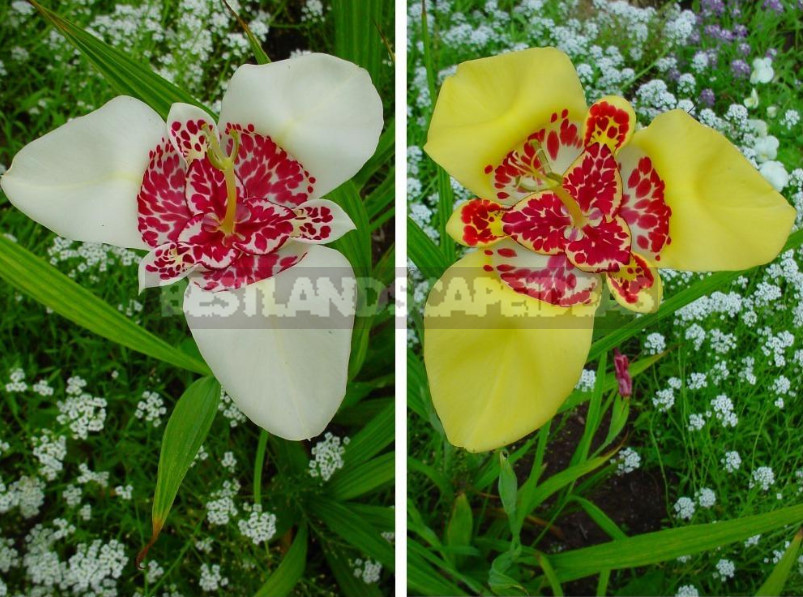
Corms are small – up to 4 cm in diameter and tend to dry. Therefore, the recommendations are different, who are advised to keep open, and who was peppered with sand. Apparently, it all depends on humidity of storage. Tigridia pavonia – the most beautiful and common of Tigridia, but if you want you can have more rare: lilac T. violacea or yellow speckled T. mexicana.
And other exotics
Schizostylis coccinea = S. pauciflora is tall, graceful, figure reminiscent of gladiolus, few flowers, but they are wide open and bright red. It has varieties, including — with pink and white flowers. In summer it grows in conditions of high humidity, but in winter it can be stored in a dry place. Pour sawdust or sand his fleshy tubers or not, only experience will show.
Hesperantha have a thick tuber in a hard shell, long basal leaves and a low stem with a loose spike-shaped inflorescence. Flowers with a curved tube is very small, but wide open, often two-colored. For storage, perhaps, fit two kinds of white flowers: H. graminifolia and H. radiata.
Сypella grow from bulbs. Similar to a very elegant irises or rather tigridia decent height (50-70 cm) with short-lived yellow and blue flowers up to 6-8 cm in diameter. We can grow species such as C. herbertii and C. Peruvian — with yellow flowers, C. coelestis = C. plumbea – with blue. It is recommended to store in the sand.
Romulea macowani – for lovers of small bulbs. A tiny thing with a bunch of narrow leaves and a single yellow flower sticking out on a short leg. Prefers sandy loam. Winter hardiness in countries with a milder climate. It is likely to have to be stored with a lump of earth or sprinkled with sand. Under a couple of her girlfriend with a pink flower – R. autumnalis.
The same small single flowers of the Crocus type have representatives of the genus Galaxia, previously attributed to the seas, but excluded for small growth and marked with yellow and purple flowers. These are G. ovata, G. graminea = G. fugacissima, G. versicolor. Recommendations for storage are the same. In summer they prefer sandy soil.
Moraea – genus is quite large, but, as among gladiolus, not all of their species are suitable for cultivation in the open field. We can recommend M. huttonii, M. moggii, M. polystachya, M. stricta, M. spathulata, M. thomsonii. These are plants with fairly high stems and basal linear leaves that can wither by the time of flowering. Flowers are single or in bundles, usually small, similar to the flowers of iris, i.e. have both turned and protruding leaves. The predominant colors are lilac and yellow.
A little geography in the end
There are certain patterns in the distribution of plants suitable for cultivation with winter dry storage. As a rule, they come from areas with relatively cold dry winters and warm wet summers. This climate exists on the coasts of Oregon and Washington in the United States; in places in the Himalayas; in southern Africa; and in southern Chile and Argentina.
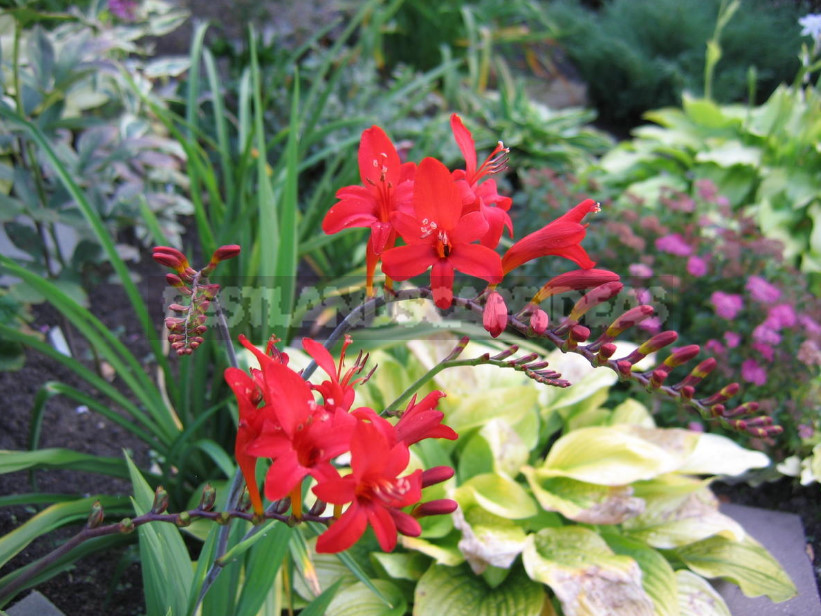
But the geography gives only a rough guidance. A variety of local conditions, ecology and biology of a particular species may mean more than geographic coordinates. So outside of these areas it is possible to find candidates to stay in the cellar.
Growing conditions in the summer for all these plants (with some amendments) do not differ from those required by hybrid gladiolus. Planted when the soil warms up to 10 degrees in fertile, deeply treated soil. Can be fed in the spring and during flowering. When they flourish, and they bloom near the end of summer, and even in early autumn, try not to forget about them and have time to dig up before the frost.
